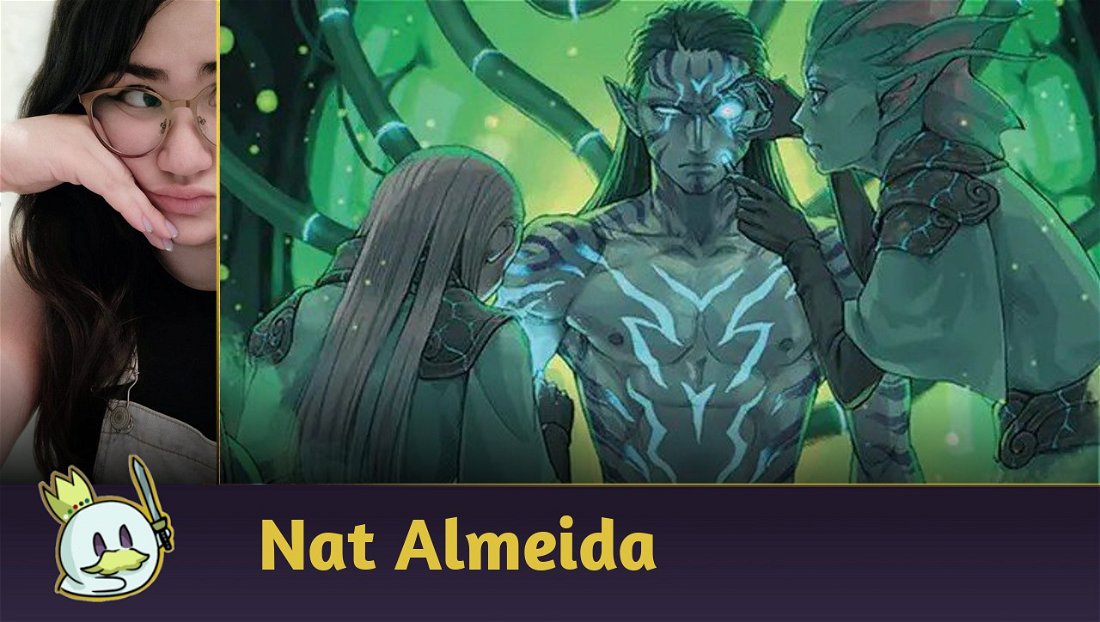Magic: The Gathering is a game with an over 30 years old long history - with more than 100 releases including main sets, reprints, Masters sets and the recent Modern Horizons and Universes Beyond products.
With such history, it is natural for power creep to eventually take over the game and specific cards become less useful because improved versions of them were released and/or because more efficient mechanics have, over the years, emerged and become mainstays in competitive formats - this occurs mainly in eternal formats.
Pauper is no exception. With the increasing popularity of the format and a design philosophy between releases that seeks to make common cards more efficient, it underwent several changes that leveraged certain strategies while making others almost obsolete or even unusable in the competitive context.
In this article, we present the main cards that make up the five pillars of Pauper today and what their practical impacts are on the Metagame.
A Look at the Past
Pauper has already had many efficient pillars in its Metagame in the last decade, and has undergone significant changes in each period as new releases brought potential staples that, little by little, shaped the format and the way games took place.
Among them, some stood out for the changes they forced.

For years, one of Pauper's biggest attractions was the fact that it was the only “competitive” format where Gush was legal with four copies, and it has starred in several archetypes since its launch on Magic Online, starting with Mono Blue Faeries, later in Delver of Secrets decks and even establishing its own archetypes such as the Tireless Tribe combo with Inside Out, remaining one of the main staples in the format despite all other changes.
In the end, Gush proved too powerful for Pauper with the Foil downshift in Ultimate Masters, which propelled Dimir Delver as the best deck in the format by a significant margin and, eventually, led to the banning of blue free spells along with Daze and Gitaxian Probe.

Although Faeries is still a competitive deck in Pauper, its presence in the Metagame today is noticeably smaller than it once was and the solid base of other powerful cards has opened up enough space for blue archetypes to no longer be so focused on the interaction between Spellstutter Sprite with Faerie Seer and Ninja of the Deep Hours.
Still, this card's impact on Pauper's history is even more lasting than that of Gush and, for years, it remained one of its main staples and one of the most efficient means of holding back more aggressive archetypes while established powerful Tempo plays, making Faeries an archetype that, in total, has been in the competitive scene for more than a decade and is just one or two new cards away from taking over the Metagame again.

Prophetic Prism has a very peculiar history in Pauper: two-mana manafixing has never been a problem for the format even when enabling several archetypes on its own - Affinity, Kuldotha Boros and Tron were three of the main decks that used it to add consistency while the artifact interacted directly with their game plans, making it a staple.
However, with the improvement in Affinity's manabases and the high consistency that cards like Bonder's Ornament offered to Tron, Prophetic Prism began to become a risk for the format, and was the target of a ban to try to reduce the consistency of two troublesome archetypes.

Burning-Tree Emissary received a downshift in Modern Masters 2017 and caused some of the most considerable changes in competitive Pauper by giving Aggro, especially Stompy, a way to make more explosive plays.
Its arrival in the format was the trigger for the natural evolution of several archetypes: Faeries stopped being Mono Blue and adopted the Izzet variants with Skred and Lightning Bolt as an interaction, the Kuldotha Boros, which was taking its first steps with the Monarch mechanic, adopted Prismatic Strands as a means of holding Aggro decks and Tron gave up its version with Fangren Marauder in favor of a Five-Color Control with Moment's Peace, Stonehorn Dignitary and the combo of Ghostly Flicker and Mnemonic Wall to “lock” the opponent.
With the downshift on Fiery Cannonade and other more efficient sweepers, Burning-Tree Emissary and the archetypes around it lost space in Pauper and still haven't received cards that, together, can reestablish non-red go wide Aggro as competitive enough.

The Monarch mechanic was once the main way to combat Gush decks, especially with Palace Sentinels and its interaction with Kor Skyfisher and Prismatic Strands, eventually leading to the birth of Boros Monarch, which remained one of Pauper's best decks until the format's notorious increase in speed made the mechanic lose much of its value.
Today, Thorn of the Black Rose is a widely played card and is present in the Black Gardens, the main traditional Midrange today, and also as a one-of or two-of in the Dimir Faeries' maindeck and/or sideboard, but mechanics no longer have the same space as they used to.
The 5 Pillars of Pauper in 2024
Bridges

Bridges are potentially the most impactful and also the most problematic cards in Pauper's recent history that remain legal in the format.
Alone, they leveraged Affinity into one of the best decks by adding a lot of consistency to it to the point where it was necessary to ban Atog, Disciple of the Vault and All That Glitters from the format to keep it in check, in addition to also leading to the recent pre-ban of Cranial Ram.
But in addition to Affinity, Bridges also added a lot to other archetypes: the Boros Synthesizer benefited a lot from the inclusion of a dual land which is also an artifact and archetypes like the Jeskai Ephemerate started to run Cleansing Wildfire with Bridges to ramp - this approach was also widely played, in other times, by Cascade variants.
Another notable change in the presence of this cycle is in the Sideboards: Dust to Dust and Deglamer have become two more than necessary staples to deal with Bridges and attack the consistency added to Affinity, and even Revoke Existence is widely played as a complement to this approach in decks like Familiars.
Deadly Dispute

Interaction with artifacts in Pauper was also boosted by the launch of Deadly Dispute and its interaction with Ichor Wellspring or Experimental Synthesizer, which transforms the card into a kind of Ancestral Recall because of the Treasure it creates.
Despite its initial appearance in Affinity, Dispute has become a staple of multiple strategies: from an important piece of the Goblin combo to an excellent source of value for Black Gardens, where cards like Khalni Garden are on the list to feed the spell earlier and thus extract the most value from it.
Its ability to be played at Instant-Speed, respond to removal and even accelerate mana places it in a very privileged space in the current Metagame - to the point of evoking several variants of its effects with each expansion, with Eviscerator's Insight being the most recent.
Experimental Synthesizer

Experimental Synthesizer was the first step in a series of changes to Pauper that, in essence, leveraged red decks as the format's main Aggro and fun police due to its interaction with Kuldotha Rebirth and Goblin Bushwhacker.
Synthesizer adds extra breath to Mono Red and means so that Glint Hawk lists can give up heavier means of obtaining value - such as Palace Sentinels - in favor of a fluid and natural interaction of the artifact with its main creatures, allowing to take more aggressive stances.
Their presence gave the red archetypes a solid base of permanents that, as a whole, changed Pauper's overall speed and the way decks need to behave to deal with Aggro, pushing out the more grindy and less consistent archetypes..
Galvanic Blast

Galvanic Blast has benefited greatly from the addition of the other pillars and has consequently become the main damage and removal spell in the current Metagame - where responding to a Myr Enforcer is just as important as ensuring that your opponent can lose the game due to a Snuff Out that they cast on their first turns.
From Affinity to Boros Synthesizer to Kuldotha Red, this card has become a staple of the format's main red decks and, on several occasions, is an excellent motivator for adding artifacts to a list for the mere benefit of dealing four damage for one mana, while cards that have protection from red or survive Galvanic Blast, such as Gurmag Angler or Tolarian Terror, become essential to combat such archetypes.
Lorien Revealed

Lorien Revealed is the main card from the Cycling commons from Lord of the Rings and became a staple in several formats due to its versatility such as land drop and card advantage in a single slot, especially in Pauper.
As it is a sorcery, the card helps feed the main Blue-Based archetype in the Metagame today, Dimir Terror, while adding more breath to decks naturally focused on Tempo, but its presence helps maintain consistency and access to colored mana from different colors for other strategies, such as Jeskai Ephemerate, Caw-Gates and Faeries.
Its insertion changed the way blue lists are assembled, increased the ease with which they access splashes and/or access a land of two types to play Snuff Out, in addition to adding an extra grind and interaction with other cards, especially with our honorable mention.
Honorable Mention: Brainstorm

Brainstorm benefited greatly from the insertion of Lorien Revealed and the rise of Tolarian Terror decks, where we can use it with Thought Scour to remove useless cards from our hand and the top of the deck.
Its classic interaction with Squadron Hawk has been at the core of Caw-Gates, Pauper's main Control strategy currently, which produces relevant results while managing to hold back the most aggressive archetypes.
Finally, Brainstorm also benefits from the recently released Sneaky Snacker, and can certainly complement this card in the Horror and Faeries lists in the coming weeks, cementing its position as a possible sixth pillar.
Conclusion
That's all for today.
If you have any questions or suggestions, feel free to leave a comment!
Thanks for reading!













— Comentarios 0
, Reacciones 1
Se el primero en comentar